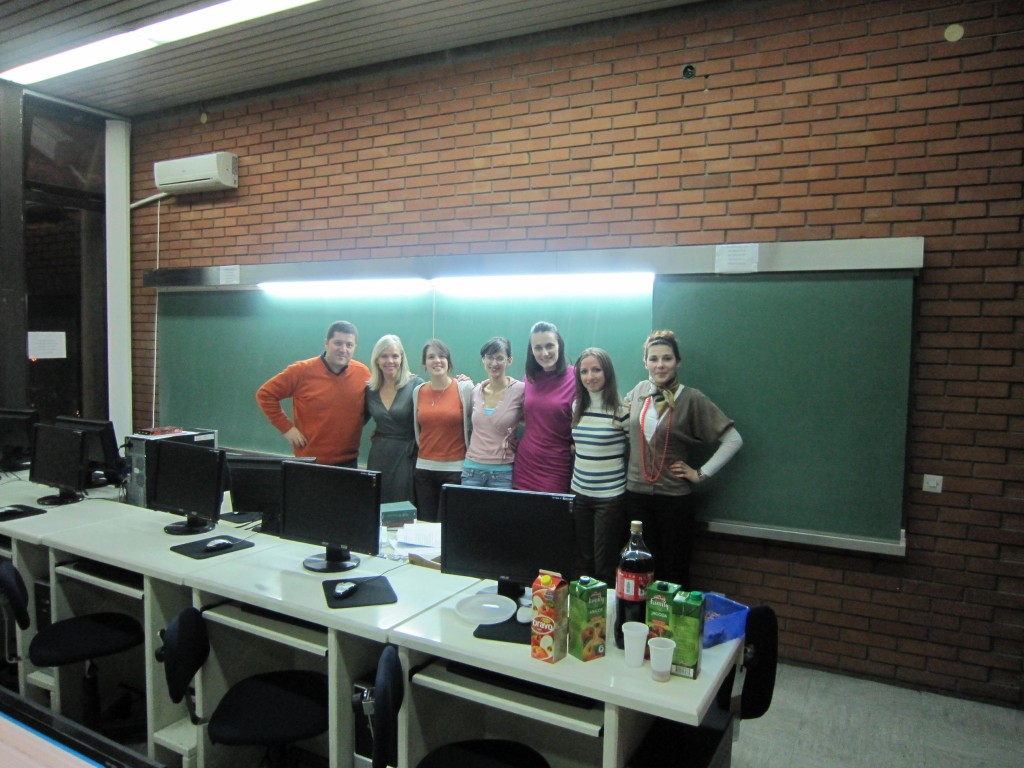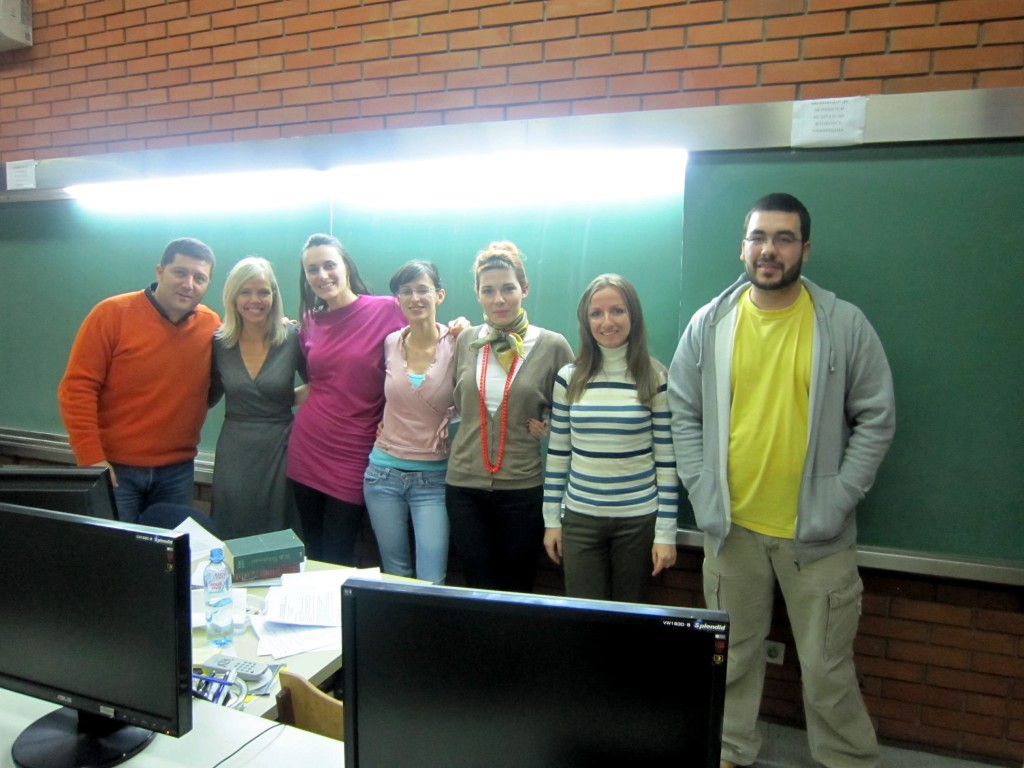Walt Whitman, Sensei
On October 11, 2010, an enthusiastic crowd settled into seats on Walt Whitman’s lawn. They had assembled to take part in the unveiling and dedication of a monumental sculpture of the poet. As envisioned by sculptor John Giannotti, Walt is in his later years– though still hale, hearty, and looking up at the delicate butterfly poised on his finger. The bronze is a gift to the Whitman Birthplace from Daisaku Ikeda, a Buddhist philosopher, world poet laureate, educator, and founder of Soka Gakkai International. Fifty years ago, Ikeda began his travels for peace by coming to New York; today, he commemorated that great beginning by bringing Walt back to his New York homestead.
Walt does indeed look at home in his old front yard, squinting up from under his broad-brimmed hat in the warm autumn sun. It is the only full-body statue of Walt at the Birthplace, and a thoughtful and generous gift on the part of Ikeda and SGI. I hope you’ll come visit Walt at his home, where you can now bask in the presence of the good gray poet in so many ways! Meanwhile, please enjoy the photos of the grand occasion, as well as the congratulatory remarks I delivered that day.
For more information on visiting the Walt Whitman Birthplace, please visit our virtual site first:
http://www.waltwhitman.org/
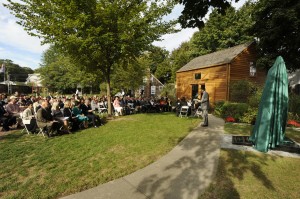 The unveiling of John Giannotti’s monumental bronze at the Whitman Birthplace, West Hills, NY.
The unveiling of John Giannotti’s monumental bronze at the Whitman Birthplace, West Hills, NY.
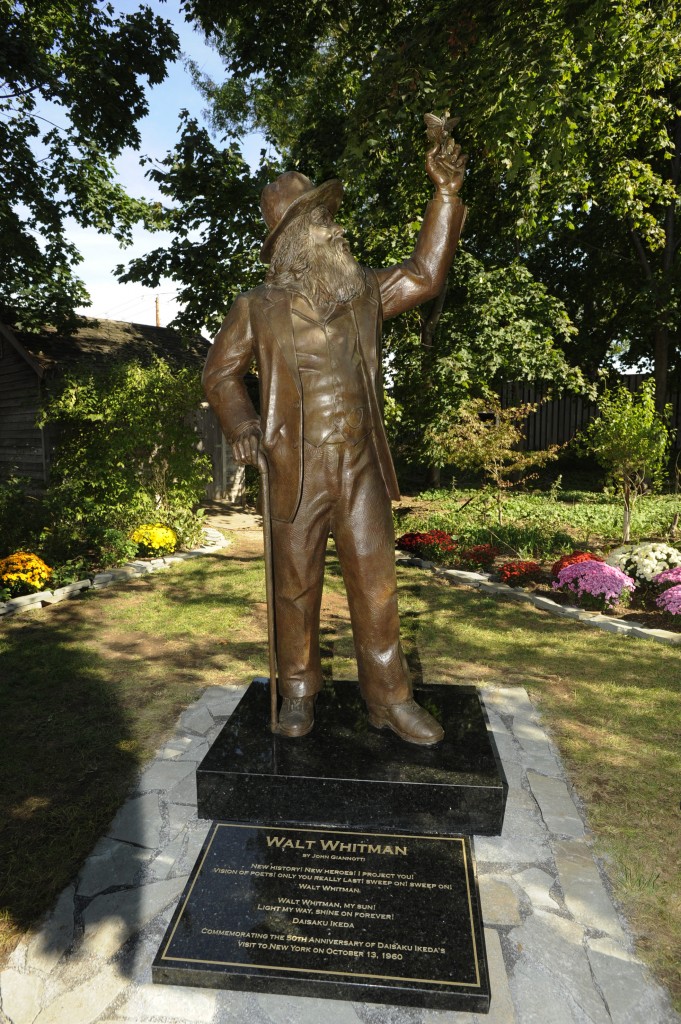 “Starting from fish-shape Paumanok, where I was born”: Walt comes home at last!
“Starting from fish-shape Paumanok, where I was born”: Walt comes home at last!
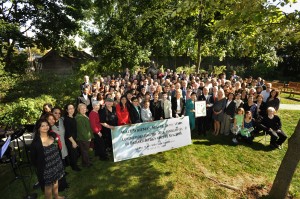 SGI members and friends gather to celebrate this historic event.
SGI members and friends gather to celebrate this historic event. 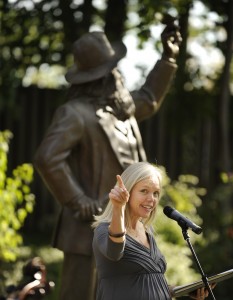
"...the future only holds thee, and can hold thee..."
There was a child went forth every day,
And the first object he looked upon and received with wonder or pity or love
or dread, that object he became,
And that object became part of him for the day or a certain part of the day . . . . or
for many years or stretching cycles of years.
(From “There Was a Child Went Forth”, Leaves of Grass 1855)
On May 31, 1819, Walt Whitman was born in this farmhouse built by his father only a few years earlier. Walt was the second of eight children, the son of a farmer who would soon leave his family legacy to pursue his interest in carpentry in burgeoning Brooklyn.
Walt Whitman spent his first four years at this house, which he held dear in his memory. His last visit was in 1881— only 11 years before his death, and exactly 100 years before Daisaku Ikeda made his own pilgrimage to this spot. Whitman describes his impressions of his West Hills birthplace in an opening passage to his autobiographical prose work, Specimen Days:
July 29, 1881.—AFTER more than forty years’ absence, (except a brief visit, to take my father there once more, two years before he died,) went down Long Island on a week’s jaunt to the place where I was born, thirty miles from New York city. Rode around the old familiar spots, viewing and pondering and dwelling long upon them, everything coming back to me. Went to the old Whitman homestead on the upland and took a view eastward, inclining south, over the broad and beautiful farm lands of my grandfather (1780,) and my father. There was the new house (1810,) the big oak a hundred and fifty or two hundred years old; there the well, the sloping kitchen-garden, and a little way off even the well-kept remains of the dwelling of my great-grandfather (1750–’60) still standing, with its mighty timbers and low ceilings. Near by, a stately grove of tall, vigorous black-walnuts, beautiful, Apollo-like, the sons or grandsons, no doubt, of black-walnuts during or before 1776. On the other side of the road spread the famous apple orchard, over twenty acres, the trees planted by hands long mouldering in the grave (my uncle Jesse’s,) but quite many of them evidently capable of throwing out their annual blossoms and fruit yet.
Looking around these grounds, Whitman concluded that his “whole family history, with its succession of links, from the first settlement down to date, told here—three centuries” concentrated in this particular spot.
Now, over a century after his death in 1892, Whitman has come home to West Hills once again.
The person who we may thank for this much-anticipated homecoming is, like Whitman, someone who seems very close and very far away at the same time. Daisaku Ikeda lives in Tokyo, though he has traveled the world extensively for the last 50 years. He, like the poet he admires, was one of eight children born to a common farmer. Like Walt, he fought for peace even while battling poverty and ill health. Fifty years ago, in 1960, Ikeda succeeded his mentor Josei Toda as president of the Soka Gakkai lay Buddhist society. And in 1975, Ikeda became the first president of the Soka Gakkai International (SGI), now a global network linking over 12 million members in about 190 countries and territories.
The central tenet of Ikeda’s philosophy is the fundamental sanctity of life. For Ikeda and his fellow Buddhist thinkers and practitioners, the recognition of this basic principle is the key to global peace and true happiness. Lasting peace will not be brought about by law or society, but relies instead on the self-motivated transformation of the individual. A passage from Ikeda’s best-known work, The Human Revolution, summarizes this idea: “A great inner revolution in just a single individual will help achieve a change in the destiny of a nation and, further, will enable a change in the destiny of all humankind.”
We gather today, then, to honor two individuals who exemplify such inner revolutions. And the butterfly sitting so gently on Walt’s finger reminds us of the possibility of such magnificent transformations in all of us. Though the process by which change happens may seem difficult or inscrutable, any one can become a beautiful force for good. As such metamorphoses occur naturally, so can they happen within you.
Whitman first used the symbol of the butterfly in the imagery for his third edition of Leaves of Grass. On the spine of the book and throughout its pages, he printed an image of a butterfly alight on a hand with index finger pointing in a variety of directions, though always to the right. What was the meaning of this symbol, which Walt used again in a famous photo of himself, and again in the frontispiece to the seventh edition of the Leaves?
In Greek, ‘psyche’ is the word for both butterfly and soul, and the belief was that butterflies were human souls searching for a new reincarnation. Celts believed that women became pregnant by swallowing butterfly-souls. According to Native American legend, if you whisper your desire to a captive butterfly and then release it, it will carry your wish to the Great Spirit. Some cultures believe that a butterfly landing on you is good luck, or that releasing butterflies is a way to celebrate a great event.
In 1972, the meteorologist and mathematician Dr. Edward Norton Lorenz delivered a paper entitled “Does the Flap of a Butterfly’s Wings in Brazil Set off a Tornado in Texas?” The idea that small changes can cause big changes, that everything is part of everything else— is the basis for Lorenz’s “Butterfly Effect.” Though the development of this theory postdates Whitman’s time, Walt may have been acquainted with (or perhaps simply had an instinctive understanding of) a related Buddhist idea, “Dependent Origination.” Whitman teaches this principle throughout Leaves of Grass, as Daisaku Ikeda also shares his philosophy through poetry. Either of them, perhaps, might have written these lines:
All truths wait in all things,
They neither hasten their own delivery nor resist it,
They do not need the obstetric forceps of the surgeon,
The insignificant is as big to me as any,
What is less or more than a touch?
(From “Song of Myself”, Leaves of Grass 1855)
Can a butterfly flapping its wings in West Hills set off dramatic changes around the world? Walt Whitman and Daisaku Ikeda both believe so, and this magnificent statue will now embody that possibility of personal and universal transformation, for us and for the generations to follow Walt’s footsteps back home.
